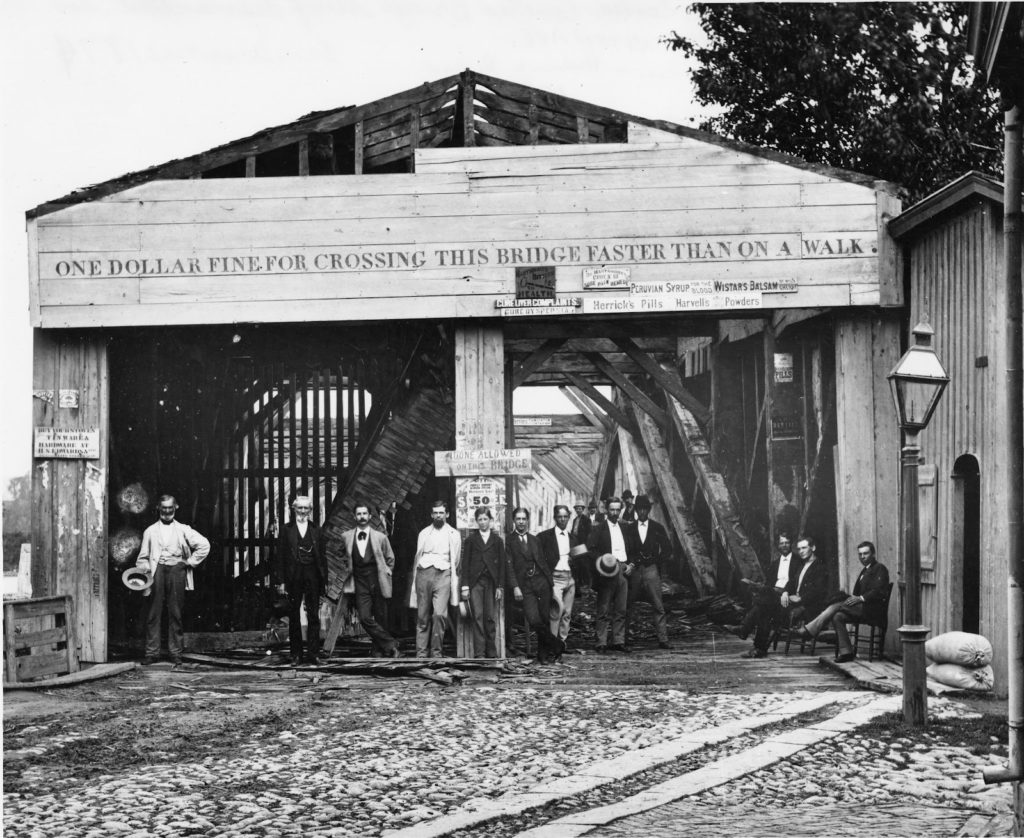
In its 1915 report, the Great Western Gateway Commission gave a little bit of history of the various bridges that had connected Schenectady to Scotia across the Mohawk River. Despite having been settled in 1661, the first permanent bridge to be built didn’t come about until 1808. It was authorized in 1800 in the formation of the Mohawk and Schenectady Bridge and Turnpike Company, which was to build a bridge across the Mohawk at Schenectady and a turnpike from Schenectady to Little Falls. It went from the foot of Washington Avenue in Schenectady to the end of the dike in Scotia, now known as Schonowe Avenue. The bridge footings are still there.
The bridge carried the following tolls:
- Twenty sheep or hogs, 8 cents.
- Twenty cattle, horses or mules, 18 cents.
- Each horse and rider or led horse, 5 cents.
- Each horse sulky, chair or chaise, 12½ cents.
- Each one-horse cart, 6 cents.
- Each chariot, coach, coaches or phaeton, 25 cents.
- Each wagon or other four-wheel carriage drawn by two horses, mules or oxen, 12½ cents, and 3 for each additional animal.
- Each cart drawn by two oxen, 6 cents, and each additional horse or ox, 2 cents.
- For each sleigh or sled drawn by two animals, 6 cents.
- No toll to be charged persons going to or coming from church, or his common business or his farm, or to and from any mill, nor from any persons passing in a sleigh or sled between January 1 and March 1 of each year.
So we’ve learned that 19th-century EZ-Pass was complicated.
That was the wooden-cable Theodore Burr bridge, opened in 1808, dumped cows into the river in 1857, and was replaced by an iron structure on the original piers in 1874. The structure was updated with steel in 1886 and allowed to carry trolleys.

1 thoughts on “The Bridge that Preceded It”